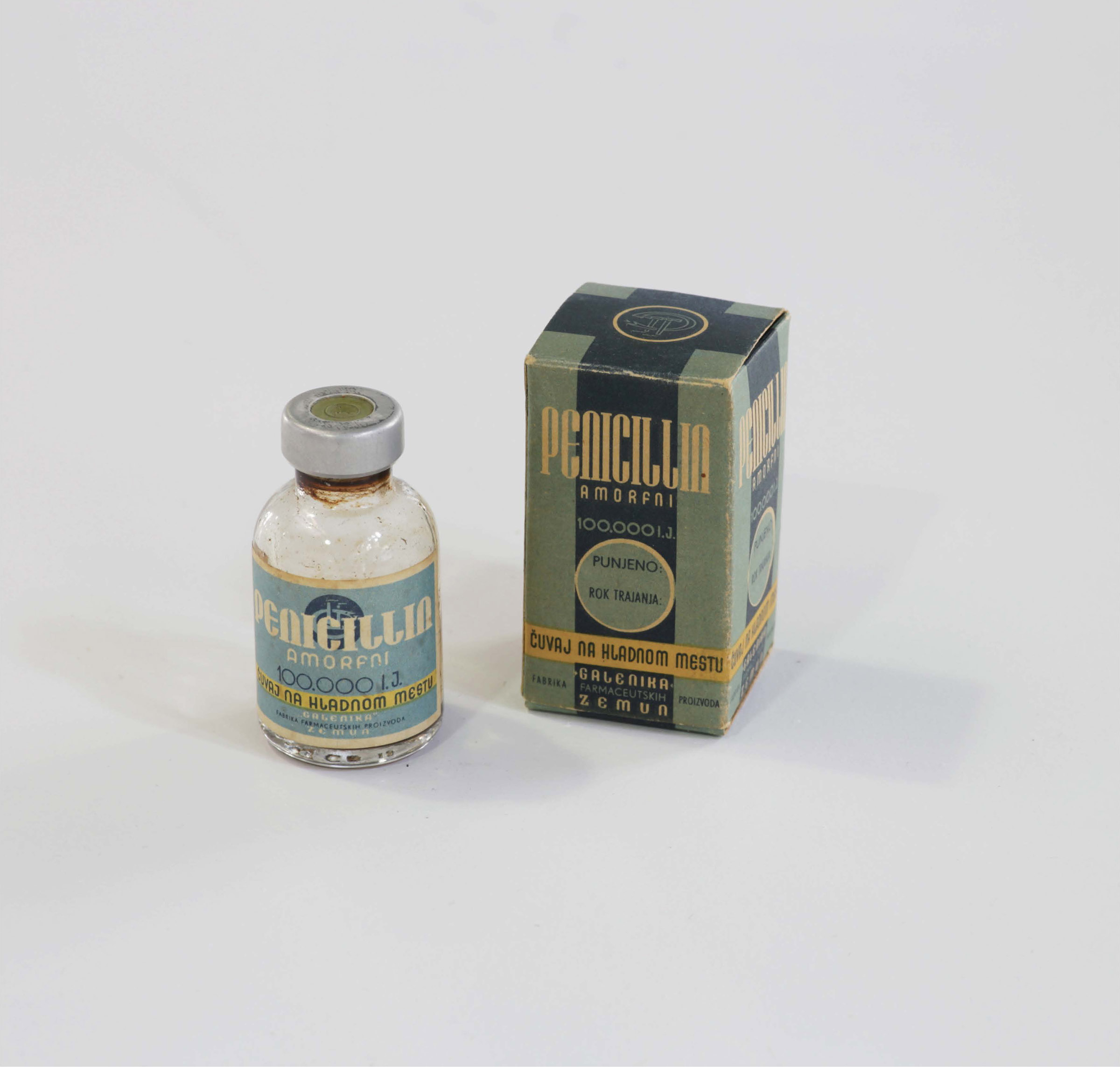Our Essential Medicine
Original packaging of Penicillin
Manufacturer: Galenika
Place and time of production: Zemun – Belgrade, SFRY, 1951
Dimensions (cm): box: 6,7 . 3,6; lio-bottle: 6,2 . 3,1
Inventory number: Т:11.7.643
Discovery of penicillin (1928), development of production technology and its introduction into the medical practice after the Second World War, made an epic change in medicine, enabling successful treatment of numerous diseases. Former Yugoslavia was the seventh European country that produced penicillin. In the first years after the War, United Nations Relief and Rehabilitation Administration (UNRRA) decided to donate a penicillin factory to Yugoslavia, due to the extremely poor health state of its population. In 1947, UNRRA bought a factory from a pharmaceutical company Merck and Co Inc. in Canada, which was the first in the world to apply a new deep fermentation technique in the production of penicillin. The factory’s facilities were installed in Belgrade, at Galenika, the first after-war state pharmaceutical factory. The Factory was put into operation on May 25, 1949 and on August 31 of the same year, the first Yugoslav penicillin was manufactured. Industrial production and clinical testing of the medicine began in January 1950. With the decision of the Committee for Protection of Public Health from May 16, 1950, Galenika was given approval to put the medicine on the market. Under the protected name Jugocilin (1953), the medicine was manufactured until 1996. The collection of objects — testaments to the history of production of Yugoslav penicillin, was donated to the Museum of Serbian Medical Society by biologist Dr Petar Bosnić, who spent three decades doing scientific research in Galenika in the field of penicillin biosynthesis.



